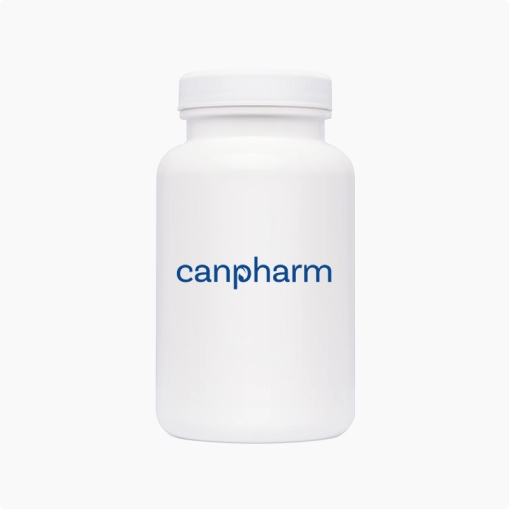
Nyvepria (Pegfilgrastim)
Out of stock
We will notify you as soon as it becomes available.
-
Description
-
Related Products
-
Related Conditions
Fact Table
| Fact Table: Nyvepria (Pegfilgrastim) | |
|---|---|
| Formula | C845H1343N223O243S9 |
| License | FDA approved |
| Bioavailability | 100% (Subcutaneous) |
| Legal status | Prescription Only |
| Chemical Name | Pegfilgrastim |
| Elimination half-life | 15 to 80 hours |
| Dosage (Strength) | 6 mg/0.6 mL |
| Pregnancy | Consult a doctor; potential risks |
| Brands | Nyvepria |
| Protein binding | Not applicable (biological agent) |
| PubChem CID | 16134936 |
| MedlinePlus | a604002 |
| ChEBI | 91457 |
| ATC code | L03AA13 |
| DrugBank | DB00019 |
| KEGG | D06409 |
| Routes of administration | Subcutaneous |
Nyvepria (pegfilgrastim-apgf) is a biosimilar to Neulasta (pegfilgrastim), an innovative medication designed to help reduce the risk of infection in cancer patients who are receiving chemotherapy that suppresses the immune system. Nyvepria is specifically used to stimulate the growth of white blood cells, aiding the body in fighting off potential infections during periods of immune system vulnerability.
This medication is a long-acting form of the human granulocyte colony-stimulating factor (G-CSF) analog. It is engineered through recombinant DNA technology and consists of a covalently bound polyethylene glycol (PEG) molecule to the N-terminal methionyl residue of filgrastim. The addition of PEG prolongs the duration of its effect in the body, typically making it a once-per-cycle treatment. Before you buy Nyvepria, it is crucial that you talk to your healthcare provider about potential side effects and Nyvepria price.
Directions
Nyvepria is administered through a subcutaneous injection. It is typically given once per chemotherapy cycle, no less than 24 hours before or after receiving chemotherapy. Patients should be trained by a healthcare professional on how to properly administer Nyvepria before attempting self-injection.
Ingredients
Nyvepria uses pegfilgrastim-apgf as its active ingredient.
Cautions
Before using Nyvepria, discuss your medical history with your healthcare provider, especially if you have:
- Sickle cell disorders
- Kidney diseases
- A history of allergic reactions to filgrastim or pegfilgrastim products
Patients should be monitored for splenic enlargement and respiratory symptoms, both of which are rare but serious side effects of pegfilgrastim products. If you experience left upper abdominal or shoulder tip pain, or difficulty breathing, contact your healthcare provider immediately.
Interactions
Currently, there are no known severe interactions with other medications; however, this does not mean no interactions exist. It is crucial to inform your healthcare providers about all the medications you are taking, including over-the-counter drugs, vitamins, and herbal supplements.
Side Effects
The use of Nyvepria may lead to various side effects, although not all patients will experience them. Common side effects include:
- Bone pain
- Pain in extremities
- Injection site reactions (redness, pain, bruising)
Frequently Asked Questions about Nyvepria
What is Nyvepria used for?
Nyvepria is used to decrease the incidence of infection, as manifested by febrile neutropenia, in patients receiving myelosuppressive chemotherapy drugs associated with a clinically significant incidence of febrile neutropenia. Nyvepria is a long-acting form of granulocyte colony-stimulating factor (G-CSF) that helps stimulate the production of neutrophils, a type of white blood cell important in fighting infections.
Is Nyvepria chemotherapy or immunotherapy?
Nyvepria is neither chemotherapy nor immunotherapy. It is a supportive care medication used to mitigate the side effects of chemotherapy, specifically by reducing the risk of infection due to low white blood cell counts (neutropenia).
How is Nyvepria administered?
Nyvepria is administered as a subcutaneous injection. It is typically given once per chemotherapy cycle, at least 24 hours after the chemotherapy session.
How to inject Nyvepria?
To inject Nyvepria, follow these steps:
- Wash your hands thoroughly.
- Prepare the injection site by cleaning it with an alcohol swab.
- Remove the Nyvepria pre-filled syringe from the package and remove the needle cap.
- Pinch a fold of skin at the injection site (usually the abdomen or thigh).
- Insert the needle at a 45-degree angle into the skin.
- Slowly push the plunger to inject the medication.
- Remove the needle and dispose of it properly in a sharps container.
Is Nyvepria a biosimilar?
Yes, Nyvepria is a biosimilar to Neulasta (pegfilgrastim). Biosimilars are biologic medical products highly similar to an already approved biological product, with no clinically meaningful differences in terms of safety, purity, and potency.
How quickly does pegfilgrastim work?
Pegfilgrastim (the active ingredient in Nyvepria) generally begins to work within a few hours after administration. Its peak effect on neutrophil counts is typically observed within 24 to 72 hours after injection.
What are the side effects of pegfilgrastim?
Common side effects of pegfilgrastim include:
- Bone pain
- Headache
- Pain in arms or legs
- Injection site reactions (redness, swelling, or pain)
Less common but more serious side effects can include:
- Splenic rupture
- Acute respiratory distress syndrome (ARDS)
- Allergic reactions
- Capillary leak syndrome
How long do pegfilgrastim side effects last?
The duration of pegfilgrastim side effects can vary. Mild side effects such as bone pain and headaches typically last for a few days after injection. More severe side effects should be reported to a healthcare provider immediately and may require medical attention.
Why does pegfilgrastim cause bone pain?
Pegfilgrastim can cause bone pain because it stimulates the bone marrow to produce more white blood cells, which can lead to increased pressure within the bone marrow and result in pain. This pain is usually managed with over-the-counter pain relievers like acetaminophen or ibuprofen.
What are the advantages of pegfilgrastim?
The advantages of pegfilgrastim include:
- Reduced risk of infection due to chemotherapy-induced neutropenia
- Less frequent dosing compared to other G-CSF medications, often requiring only a single injection per chemotherapy cycle
- Improved patient compliance and convenience due to its long-acting nature
- Effective in maintaining adequate neutrophil counts, allowing for optimal chemotherapy dosing and schedule adherence
